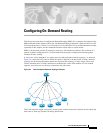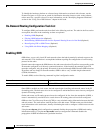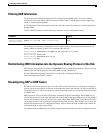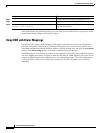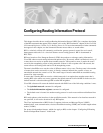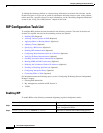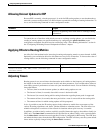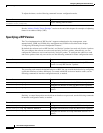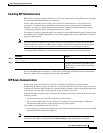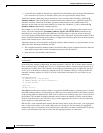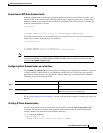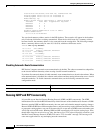
Configuring Routing Information Protocol
RIP Configuration Task List
IPC-200
Cisco IOS IP Configuration Guide
To identify the hardware platform or software image information associated with a feature, use the
Feature Navigator on Cisco.com to search for information about the feature or refer to the software
release notes for a specific release. For more information, see the “Identifying Supported Platforms”
section in the “Using Cisco IOS Software” chapter in this book.
RIP Configuration Task List
To configure RIP, perform the tasks described in the following sections. The tasks in the first two
sections are required; the tasks in the remaining sections are optional.
• Enabling RIP (Required)
• Allowing Unicast Updates for RIP (Required)
• Applying Offsets to Routing Metrics (Optional)
• Adjusting Timers (Optional)
• Specifying a RIP Version (Optional)
• Enabling RIP Authentication (Optional)
• Configuring Route Summarization on an Interface (Optional)
• Verifying IP Route Summarization (Optional)
• Disabling Automatic Route Summarization (Optional)
• Running IGRP and RIP Concurrently (Optional)
• Disabling the Validation of Source IP Addresses (Optional)
• Enabling or Disabling Split Horizon (Optional)
• Configuring Interpacket Delay (Optional)
• Connecting RIP to a WAN (Optional)
For information about the following topics, see the “Configuring IP Routing Protocol-Independent
Features” chapter:
• Filtering RIP information
• Key management (available in RIP Version 2)
• VLSM
Enabling RIP
To enable RIP, use the following commands beginning in global configuration mode:
Command Purpose
Step 1
Router(config)# router rip
Enables a RIP routing process, which places you in
router configuration mode.
Step 2
Router(config-router)# network ip-address
Associates a network with a RIP routing process.






